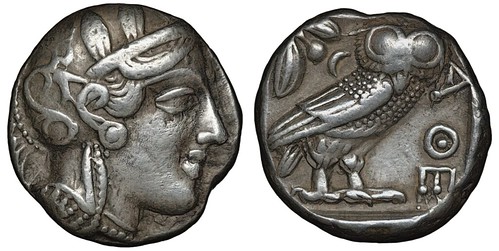
PREV ARTICLE
NEXT ARTICLE
FULL ISSUE
PREV FULL ISSUE
ANCIENT GREEK COINAGE GOLD PURIFICATION STUDYA new study looks at ancient techniques of gold purification. -Editor In a recent study, researchers used ICP-MS to learn new insights into ancient coinage and gold purification techniques are revealed through the analysis of platinum-group elements and gold in silver coins from various ancient civilizations. Attica and Cyclades coins from ancient Greece are famous for their historical and cultural significance. These coins are unique because of their low gold content, and a team of researchers is using inductively coupled plasma–mass spectrometry (ICP-MS) to analyze them. The team looked at platinum-group elements (PGEs) and gold in 72 silver coins from various ancient civilizations, including Greece, Rome, India, medieval Europe, and colonial Spanish Americas. ICP-MS was used to measure the concentrations of PGEs and gold in silver coins, providing valuable insights into the coinage and metallurgical techniques of the past. The results of this research offer a fresh perspective on the composition and origin of ancient Greek and Hellenistic coins, as well as those from other ancient cultures. The findings reveal that the behavior of PGEs and gold in these coins is closely aligned with their respective positions in the periodic table, shedding light on the coin production processes employed by various civilizations. The researchers used quadruple ICP-MS to analyze platinum-group elements such as platinum (Pt), iridium (Ir), ruthenium (Ru), palladium (Pd), and rhodium (Rh). They found distinct patterns in these silver coins. For example, the most volatile elements, such as Rh, were found at or below the detection level, possibly because of evaporation during the smelting and cupellation processes. Meanwhile, for Ru and Irdemonstrated variations in coinage consistent with these properties. The soluble elements Pd and Pt exhibited patterns in the coins that align with their solubility characteristics. One intriguing discovery was the dichotomy of the Ir:Au ratios, which challenged preconceived notions about salt cementation and its effect on gold. Iridium was believed to be lost in gold during salt cementation, but the ratios indicated that there could be regional variations in ore genesis conditions, such as the chlorinity of hydrothermal solutions. So what do you think about this article from Spectroscopy? What if I told you that last paragraph says "This article was written with the help of artificial intelligence and has been edited to ensure accuracy and clarity"? -Editor
To read the complete article, see:
Wayne Homren, Editor The Numismatic Bibliomania Society is a non-profit organization promoting numismatic literature. See our web site at coinbooks.org. To submit items for publication in The E-Sylum, write to the Editor at this address: whomren@gmail.com To subscribe go to: https://my.binhost.com/lists/listinfo/esylum All Rights Reserved. NBS Home Page Contact the NBS webmaster 
|

